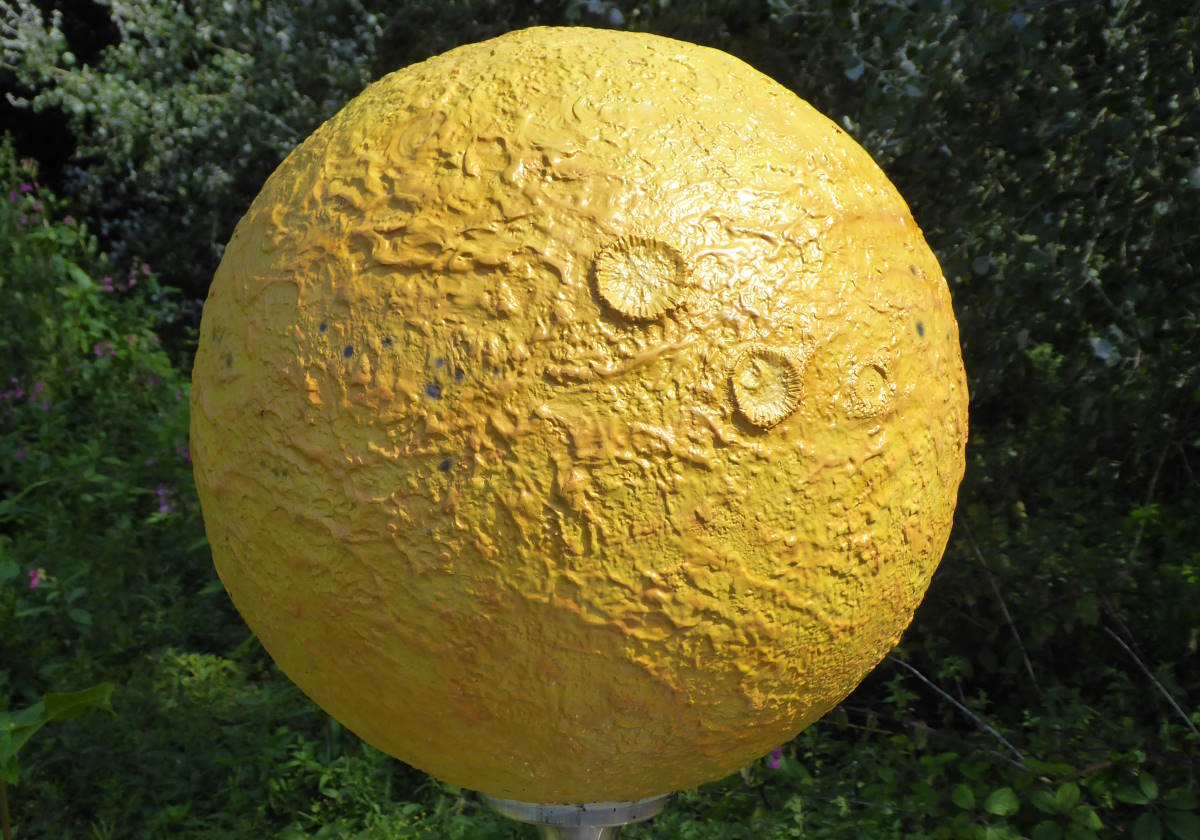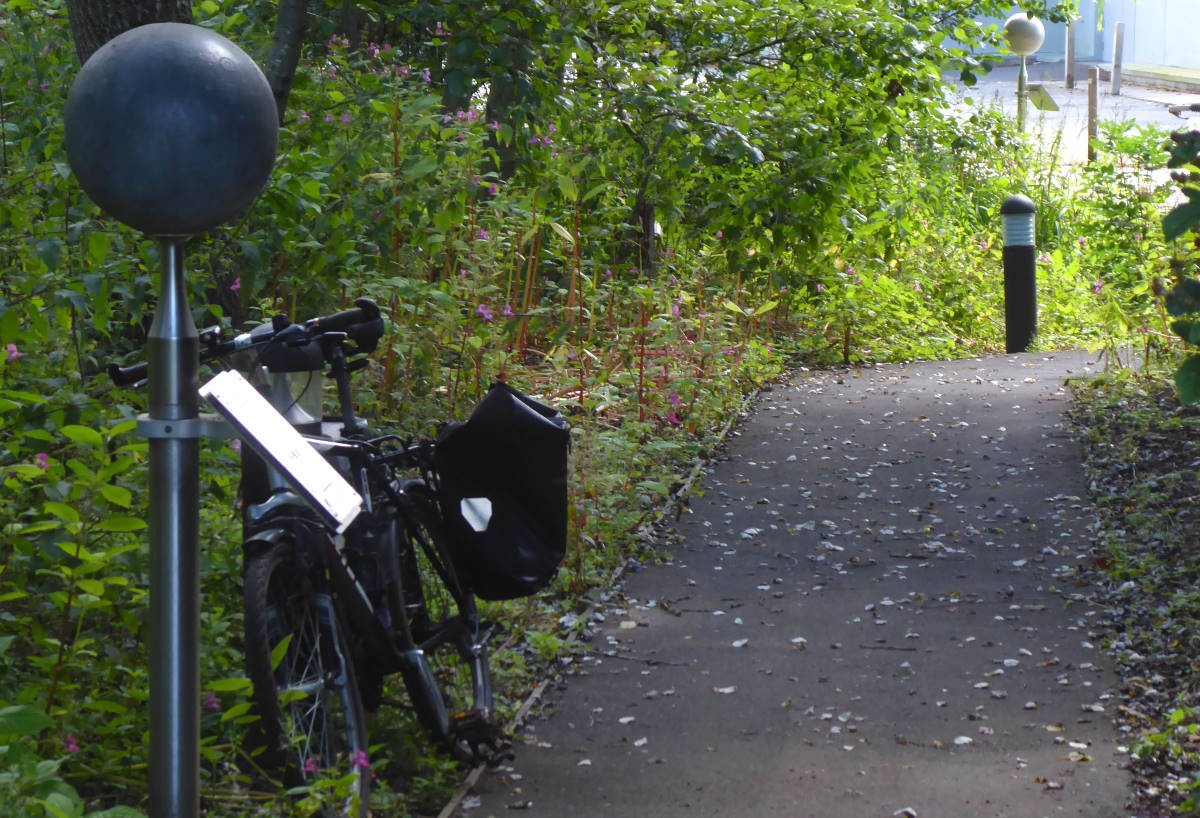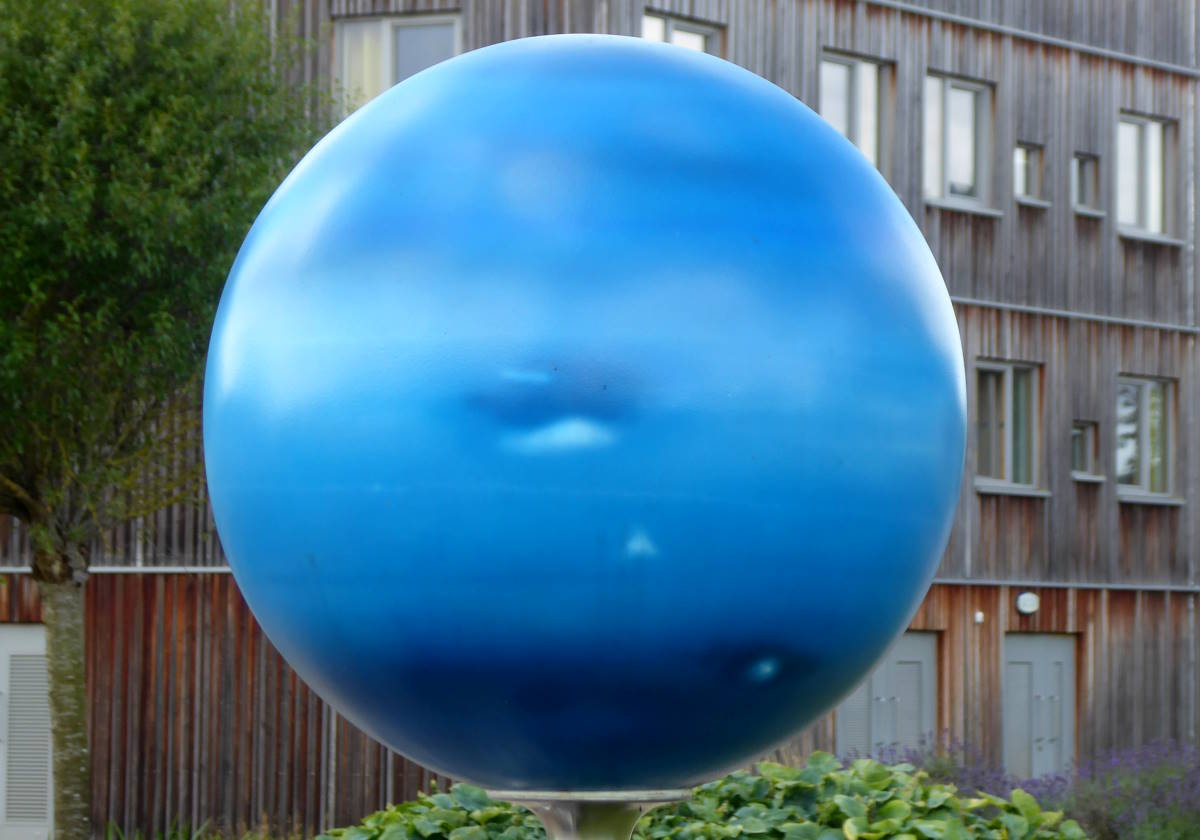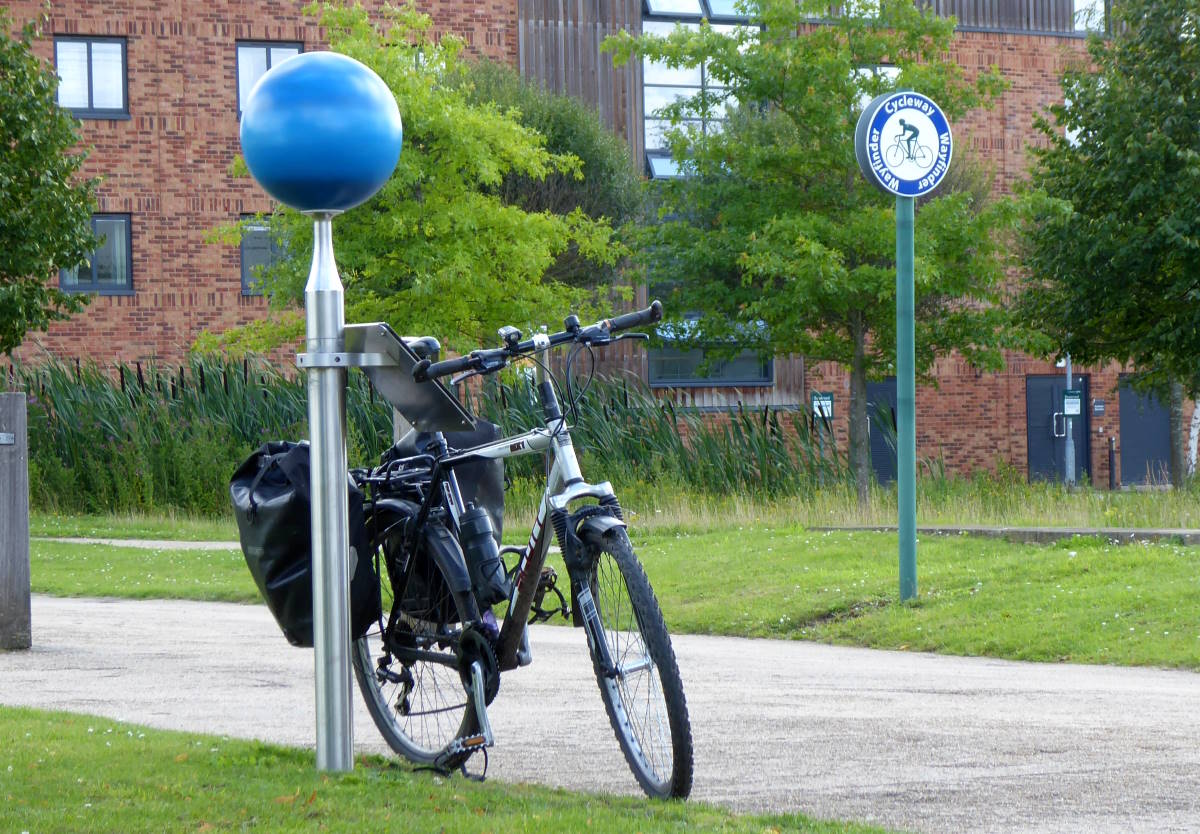The wonderful solar system model on the York to Selby cycle path, which I blogged earlier this week, is not York’s only cyclable scale model of the planets. There’s another on the university campus, installed in 2016, in which the distance between planets is much more walkable thanks to a scale of 1 in 2 billion or so, putting Pluto at 2.71km from the Sun (compared with 10km for the other version).
However, all the planets are the same, beachball size. Clearly the Uni believes in equality, regardless of colour or orientation. Literally: from red Mars to blue Neptune, from straight Mercury to 90-degree Uranus to completely retrograde Venus. Yes, I’m pleased to say York embraces diversity.
Here’s your guide to the Astrocampus.
→ There’s a map at the bottom of this page.

0 Sun 0m

Right by the Sun is the university’s observatory (not open to the public) with optical and radio telescopes. They do cool stuff here like find exoplanets. It’s astounding how they locate such small, unimaginably distant, elusive objects. I can’t even find my keys much of the time.

1 Mercury 10m

Mercury is the quiet one of the planets, lined, cratered and grey, so I can identify. But like all the models here it’s shiny and new: the old set was replaced by fresh ones in 2022. Let’s hope they don’t get nicked by mischievous students, which is what happened to the last Saturn.

2 Venus 50m

In real life, Venus is often the brightest thing in the sky after the Sun and Moon – bright enough to cast shadows, it’s said. Certainly the paint job on this model is full-on white. If anyone used the leftovers to paint their kitchen they’ll need sunglasses when they make dinner.

3 Earth 120m

As you reach Earth it’s clear you’re entering campus territory, with James Block J the first of the newbuild architecture that will accompany you for the rest of the solar system. It’s all shiny and new and rather Dutch-feeling, almost, thanks to decent bike paths, and the flatness. Mainly the flatness.

4 Mars 170m

Mars is in front of the Psychology Department, where we’ve been occasional subjects for experiments. In one of them we drove virtual cars through a virtual townscape, and probably ruined their results by watching out for cyclists all the time.

5 Jupiter 390m

The Maths Dept and Physics & Engineering Dept are the backdrop to Jupiter. I love maths, because it essentially consists of asking silly questions (What happens if we do this backwards? An infinite number of times? In four dimensions?) but actually answering them. A bit like my writing.

6 Saturn 920m

Saturn, rings and all, feels oddly out of place, with its country-house-garden backdrop of Heslington Hall, and series of fountained lakes like Geneva. No wonder I always get disoriented and lost between Jupiter and here.

7 Uranus 1.78km

Things get remote as you ride to the sparse outpost of Campus East. Uranus boasts a steel halo, referencing its faint rings. Reedy, breezed lakes and flocks of birds give it quite a Netherlandish feel, enhanced by the brick-tiled road surfaces sagging on the sand below.

8 Neptune 2.40km

Bright blue Neptune is out between Goodricke and Langwith Colleges. I used to be a Deliveroo cyclist, and this was the nightmare delivery. It was way beyond our official limit, but crafty students would game the system with misleading postcodes, so our ‘ten-minute job’ would take half an hour, resulting in payment deductions by the company’s algorithm for ‘taking too long’.

9 Pluto 2.71km

And finally far-flung Pluto, out by Constantine College. York Sport Village is out here, plus an excitingly banked velodrome (where I’ve tried track bikes, rather slowly) and a flat kilometre-long cycling circuit used by clubs and organisations.
MAP
